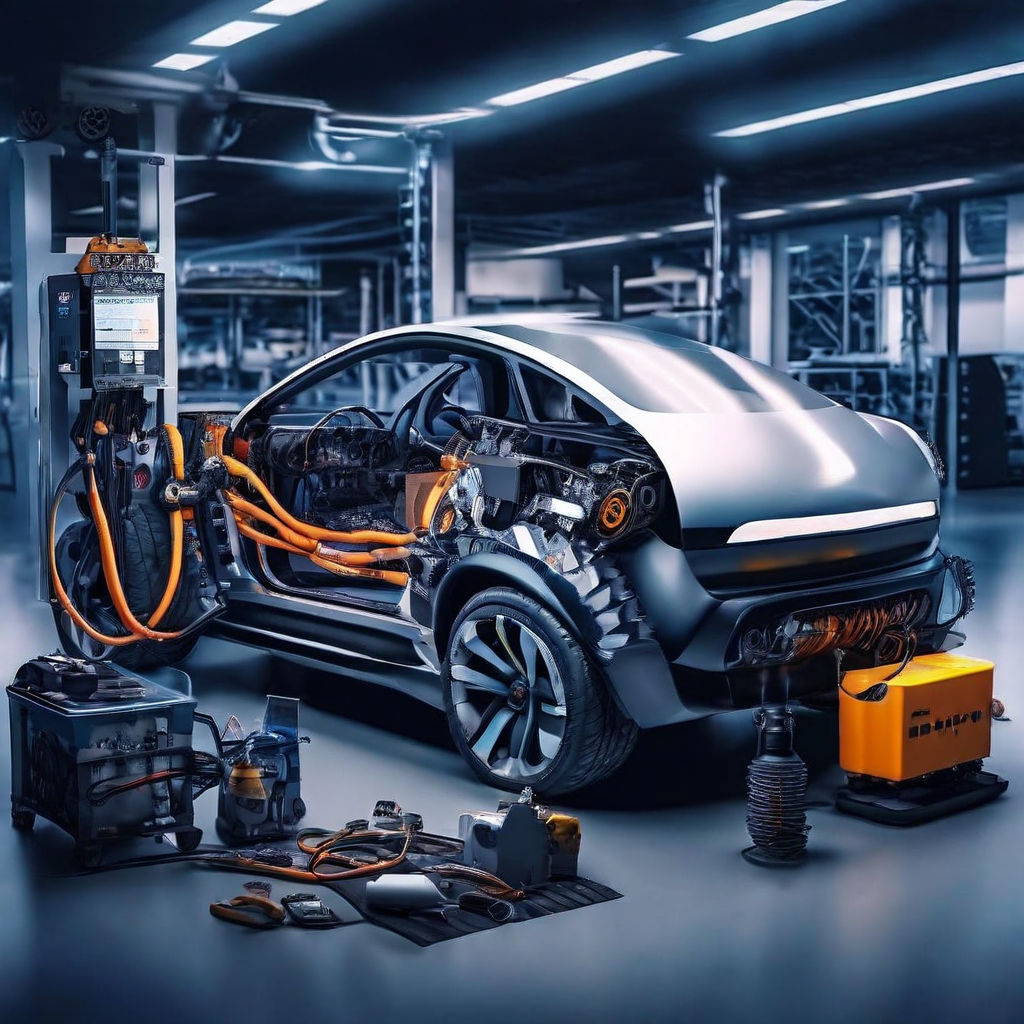
As the electric vehicle (EV) market continues to grow, maintaining and upgrading your EV has become essential for optimizing performance and extending vehicle life. Electric vehicles, while generally requiring less maintenance than internal combustion engine (ICE) vehicles, still have specific needs and opportunities for enhancement. This guide will provide you with professional insights into EV maintenance and upgrades, incorporating essential data and expert advice to ensure your electric vehicle remains in peak condition.
1. Routine Maintenance for Electric Vehicles
Battery Health: The Core of EV Performance
Battery management is crucial for EVs. The battery is not only the heart of your vehicle but also a significant investment. Here’s what you need to know:
- Battery Life Expectancy: Most modern EV batteries are designed to last between 100,000 and 150,000 miles. Proper care can extend this lifespan.
- Monitoring Battery Health: Regularly check the state of charge (SOC) and state of health (SOH). Tools like OBD-II scanners or specialized battery management systems (BMS) can provide real-time data.
Pro Tip: Keep your battery charged between 20% and 80% to prolong its lifespan and avoid extreme charge levels that can degrade battery health.
Cooling System Maintenance
Electric vehicle batteries generate heat during operation, which is managed by an advanced cooling system. Here’s how to maintain it:
- Coolant Levels: Check the coolant levels every 12,000 miles. Insufficient coolant can lead to overheating and battery damage.
- Coolant Replacement: Replace the coolant as recommended by the manufacturer, typically every 60,000 to 100,000 miles.
Brake System Care
EVs use regenerative braking, which reduces wear on conventional brake components. However, regular brake system maintenance is still essential:
- Brake Pads: Inspect brake pads every 20,000 to 30,000 miles, though they often last longer due to less frequent use.
- Brake Fluid: Replace brake fluid every 2 to 3 years or as recommended by the manufacturer.
2. Essential Upgrades for Enhanced Performance
1. Upgrading Battery Management Systems
Advanced Battery Management Systems (BMS) can improve performance and extend battery life. Consider the following upgrades:
- Battery Monitoring Systems: Invest in a high-quality BMS that provides detailed insights into battery performance, temperature, and health.
- Smart Charging Solutions: Upgrading to a smart charger can optimize charging times and protect the battery from overcharging.
2. Enhanced Charging Infrastructure
Improving your charging setup can significantly impact convenience and efficiency:
- Level 2 Chargers: Install a Level 2 home charging station to reduce charging time to 4-8 hours compared to 12-24 hours with standard home outlets.
- Public Charging Networks: Explore memberships or apps that provide access to extensive public charging networks and real-time charging station data.
3. Aerodynamic Enhancements
Reducing aerodynamic drag can improve efficiency and range:
- Aerodynamic Kits: Install aftermarket aerodynamic kits such as spoilers and side skirts to reduce drag and increase efficiency.
- Wheel Covers: Consider aerodynamic wheel covers designed to reduce air resistance and improve overall range.
3. Performance Upgrades
1. Upgrading the Electric Motor
For those looking to enhance acceleration and power:
- High-Performance Motors: Aftermarket performance motors can provide increased torque and acceleration, improving driving dynamics.
- Motor Controllers: Upgrading motor controllers can enhance throttle response and overall performance.
2. Suspension Enhancements
Upgrading the suspension system can improve handling and ride quality:
- Adjustable Coilovers: Install adjustable coilover suspension kits to fine-tune the ride height and stiffness for better handling.
- Upgraded Bushings: Replace factory bushings with performance bushings to reduce play and enhance steering precision.
4. Cost Considerations and Benefits
Cost vs. Benefit Analysis:
- Battery Upgrades: Advanced BMS and smart chargers may cost between $500 and $1,500 but can extend battery life and improve efficiency.
- Charging Infrastructure: Level 2 chargers range from $300 to $700, offering faster charging and increased convenience.
- Aerodynamic Enhancements: Aerodynamic kits and wheel covers can cost between $200 and $1,000 but may improve range by 5-10%.
Long-Term Benefits:
- Increased Efficiency: Upgrades can lead to improved range and reduced charging times.
- Enhanced Performance: Performance upgrades can significantly enhance driving dynamics and satisfaction.
- Extended Vehicle Life: Regular maintenance and strategic upgrades can extend the overall lifespan of your EV.
Conclusion
Maintaining and upgrading your electric vehicle involves a mix of routine care and strategic enhancements. By focusing on battery health, cooling systems, brake maintenance, and considering performance and efficiency upgrades, you can ensure your EV remains in optimal condition. Regular maintenance, combined with thoughtful upgrades, will not only improve your driving experience but also extend the life of your vehicle, making it a wise investment for the future.

